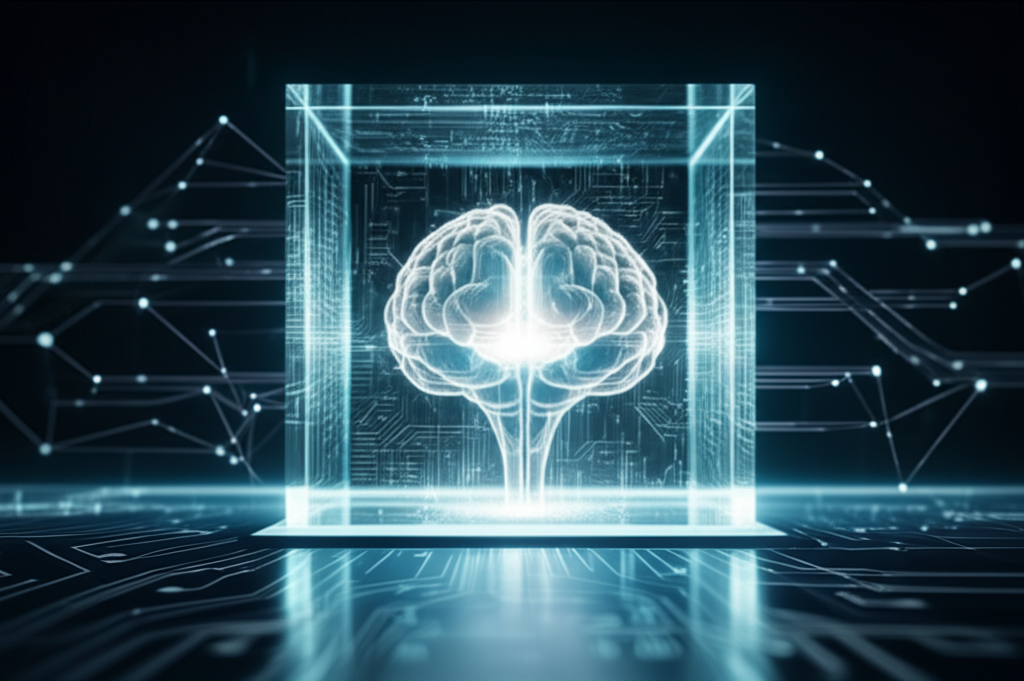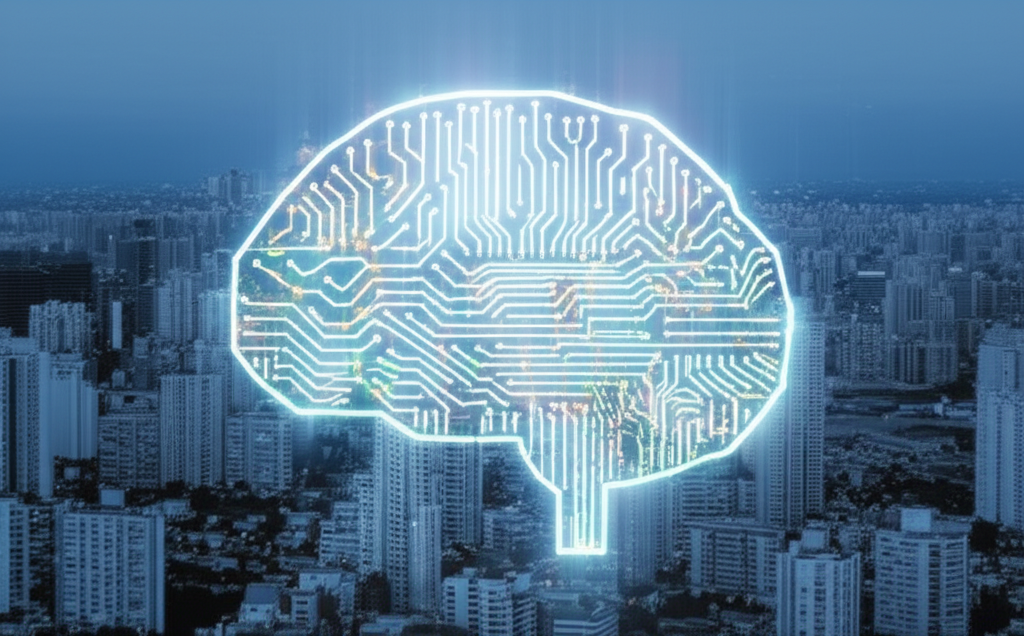The integration of artificial intelligence into various industries has introduced unparalleled opportunities for innovation, but also significant challenges in transparency and accountability. As AI systems become more pervasive, the issue of their “black box” nature—where the decision-making processes are opaque—has sparked considerable debate. Converting these opaque systems into “glass boxes” through enhanced transparency is crucial to harnessing AI’s full potential responsibly.
This article explores how blockchain technology can play a critical role in achieving this transformation by providing immutable, transparent records of AI processes. We will delve into core concepts, explore real-world applications, address potential challenges, and conclude with practical insights for those looking to implement these technologies. Readers will gain a comprehensive understanding of how blockchain can be leveraged to audit AI, ensuring both performance and ethical standards are met.
Core Concepts of AI and Blockchain Integration
Understanding AI as a Black Box
Artificial intelligence often functions as a “black box,” where inputs lead to outputs with minimal understanding of how decisions are made internally. This opacity can be problematic, particularly in sensitive sectors like healthcare and finance, where accountability is critical. AI’s complexity arises from machine learning algorithms that use vast datasets to identify patterns, which humans may struggle to interpret.
The challenge lies in ensuring that these decision processes are transparent and understandable. The “glass box” analogy signifies opening up these processes so that stakeholders can have insight into decision-making paths, fostering trust in AI applications. This is where blockchain’s role becomes transformative.
Blockchain’s Role in Transparent Auditing
Blockchain technology provides a decentralized and immutable ledger that records transactions in a transparent manner. This characteristic is particularly beneficial for auditing purposes because every entry is timestamped and traceable. Unlike traditional databases, a blockchain ledger cannot be altered retroactively without consensus, ensuring data integrity.
Applying these principles to AI systems can enable real-time logging of decision-making processes, creating an auditable trail. This adds a layer of transparency and helps transform AI from a black box into a more comprehensible glass box. Stakeholders, such as regulators and users, can verify operations and outcomes, ensuring AI accountability.
The Synergy of AI and Blockchain Technologies
Combining AI and blockchain creates a synergistic relationship where the strengths of one technology compensate for the weaknesses of the other. AI’s ability to process vast amounts of data at high speed complements blockchain’s security and transparency capabilities. This combination can produce systems that are not only fast and efficient but also transparent and secure.
For example, in the supply chain industry, AI can predict demand and optimize logistics, while blockchain ensures that every step from production to delivery is transparent and verifiable. This blend of technological capabilities results in enhanced efficiency and trustworthiness.
Digital Signature Verification as a Core Principle
Digital signatures in blockchain function similarly to a personal signature but are secured through cryptographic methods. They authenticate the origin and integrity of data, essential for verifying transactions in blockchain and, by extension, AI processes. Implementing digital signatures in AI audits guarantees that data inputs and decisions are verified at each step.
This cryptographic assurance ensures that any data fed into the AI system, as well as outputs, can be trusted as genuine. These verified processes provide an invaluable layer of accountability and trust in AI systems, essential for sensitive applications like autonomous vehicles or fintech solutions.
Implementing Blockchain for AI Auditing
Framework for Integration
Integrating blockchain into AI auditing begins with setting up a framework that defines the parameters and objectives of transparency. This involves selecting suitable blockchain platforms and determining which aspects of AI operations require monitoring and logging. Ethereum, for example, offers smart contract capabilities which can automate and record complex AI decisions.
Once the framework is defined, developers can map out the data flow from AI processes to blockchain entries. This includes implementing smart contracts to automate logging tasks, ensuring all AI activities are recorded in real-time and accessible for auditing.
Smart Contracts in AI Decision Logging
Smart contracts are self-executing contracts with the terms of the agreement written into code, which run on blockchain networks. These can be invaluable for logging AI decisions, as they automate the recording process and provide immutable evidence of AI operations. This ensures that every AI output is logged with transparency and traceability.
For instance, in financial services, a smart contract can automatically document each transaction processed by an AI system, including the conditions and outcomes, offering a transparent audit path. This logging is critical for compliance with regulatory standards and building user trust.
Case Studies of Blockchain Usage in AI
Several industries have begun to successfully integrate blockchain into AI processes. In healthcare, for instance, blockchain is used to securely log patient data processed by AI diagnostic tools, ensuring data privacy and integrity. This creates an audit trail that medical professionals and regulators can trust.
Another example is in agriculture, where blockchain records AI-driven crop predictions and yield analyses, ensuring that data used for market forecasting and resource management is verifiable and reliable. These real-world implementations illustrate the practical benefits of this synergistic technology blend.
Overcoming Initial Implementation Barriers
Despite the potential benefits, initial integration of blockchain and AI poses certain challenges. The most prominent is the technical complexity of implementing these technologies in synchronized operations. This requires not only technical expertise but also strategic planning to ensure system interoperability.
Furthermore, organizations must address legal and regulatory considerations specific to their industry, which can vary significantly. Involvement of multidisciplinary teams and pilot projects can help overcome these barriers, ensuring a smoother transition and integration process.
Challenges and Security Considerations
Data Privacy and Security Concerns
Data privacy is a paramount concern when using blockchain and AI together. While blockchain offers transparency and immutability, it can also potentially expose sensitive data if not properly secured. Therefore, a robust approach to data encryption and access control is necessary to ensure privacy.
Implementing privacy-preserving techniques, such as zero-knowledge proofs or homomorphic encryption, can mitigate these risks. These techniques allow data verification without exposing the data itself, balancing transparency with confidentiality, a crucial requirement when auditing AI processes.
Scalability of Blockchain Solutions
Scalability remains a significant challenge for many blockchain-based systems, impacting their ability to handle large volumes of data typical in AI applications. With current technology, processing speed and storage can become bottlenecks, especially as AI-generated data grows exponentially.
Layer 2 scaling solutions, which build additional layers atop main blockchain networks, can address these issues. Solutions such as sidechains or state channels can increase transaction throughput and reduce latency, facilitating the efficient scaling of AI audits.
Interoperability Between Systems
Achieving seamless interoperability between AI systems and blockchain networks is crucial for effective implementation. Different systems may use varying standards and protocols, posing a challenge for integration. Efforts towards standardization, alongside tools that facilitate cross-chain transactions, are essential to enhancing synergy.
Adopting interoperability protocols, such as those developed by the Interledger Protocol or Chainlink, can enable these systems to communicate and operate symbiotically, ensuring a cohesive operation. This is crucial for industries like supply chain management, where diverse systems must collaborate efficiently.
Regulatory and Compliance Challenges
Regulatory frameworks for blockchain and AI auditing are still evolving, causing uncertainty for organizations adopting these technologies. It’s essential for businesses to stay informed about legal developments and technology-specific regulations in their jurisdictions.
Collaborating with legal and compliance experts can ensure adherence to applicable laws, preventing potential legal conflicts. Additionally, participating in industry consortia and working with regulatory bodies can help shape future regulations conducive to blockchain and AI integration.
Conclusion
Blockchain technology stands as a promising ally in transforming AI’s black box into a glass box, ensuring transparency and accountability in decision-making processes. By integrating blockchain’s immutable and transparent ledger capabilities, AI systems can be audited effectively, mitigating risks of bias or error.
To actualize this potential, businesses must navigate technical complexities and regulatory landscapes strategically. By adopting a collaborative approach with technology experts and legal professionals, organizations can advance confidently towards transparent AI systems, fulfilling ethical and operational standards. The future of AI auditing with blockchain is bright, promising enhanced trust and reliability across industries.
FAQs
What are the main challenges of using AI as a ‘black box’?
The main challenges of using AI as a ‘black box’ include a lack of transparency and accountability in decision-making processes. This opacity can be particularly problematic in sectors like healthcare and finance, where critical decisions are made. The complexity of AI, driven by machine learning algorithms that process vast datasets, makes it difficult for humans to interpret decision-making paths, leading to issues of trust and compliance.
How does blockchain technology help to audit AI systems?
Blockchain technology helps audit AI systems by providing an immutable, decentralized ledger that records transactions transparently. Each entry is timestamped and traceable, ensuring data integrity. This allows for real-time logging of processes, creating an auditable trail that transforms AI from a ‘black box’ into a ‘glass box.’ Stakeholders can verify the operations and outcomes, enhancing accountability and trust in AI applications.
What synergy exists between AI and blockchain technologies?
AI and blockchain technologies create a synergy where AI’s ability to process vast amounts of data at high speed is complemented by blockchain’s security and transparency. This combination allows the development of systems that are fast, efficient, transparent, and secure. For instance, AI can optimize logistics in supply chains while blockchain ensures transparency and traceability, enhancing both efficiency and trustworthiness.
Essential considerations for Core Concepts of AI and Blockchain Integration include:
Technical implementation requires systematic approaches that balance functionality with practical constraints.- Decentralized Auditing: Leverage blockchain’s immutable ledger to ensure AI processes remain transparent and verifiable at all stages.
- Data Integrity: Use blockchain to securely timestamp AI training data, enhancing trust and reducing data manipulation risks.
- Interoperable Frameworks: Design AI systems compatible with existing blockchain protocols to streamline data exchange and collaboration.
- Consent Management: Implement smart contracts to automate and enforce user consent within AI-driven applications, ensuring compliance with regulations.
- Trust Building: Foster stakeholder confidence through blockchain’s transparency, enhancing accountability in AI decision-making processes.
| Core Concept | Detailed Explanation and Implementation |
|---|---|
| AI Process Transparency via Blockchain |
– Objective: Transform AI’s opaque decision-making into auditable processes. – Key Players: IBM’s Watson, Google AI, Azure ML. – Strategy: Use blockchain to log every data input and AI decision in a decentralized ledger. – Implementation Steps: Select compatible blockchain (e.g., Ethereum for smart contracts), design smart contracts for decision logging, integrate via API with existing AI systems. |
| Immutable Records for AI Systems |
– Purpose: Guarantee integrity of AI algorithms by securing them on blockchain. – Tools: Hyperledger Fabric, Corda. – Process: Hash AI models onto the blockchain at periodic intervals to create an unchangeable trail. – Best Practice: Regular audits by third-party services like CertiK ensure ongoing compliance. |
| Tracking AI Decision Lineage |
– Goal: Provide lineage tracking for AI decisions to enhance accountability. – Example: Microsoft Project Bonsai’s integration with blockchain for decision traceability. – Steps: Track each decision-fold and its contributing factors using blockchain identifiers. – Methodology: Utilize DAG (Directed Acyclic Graph) to visualize decision pathways. |
| Securing AI Data Inputs |
– Importance: Ensure integrity and origin of data feeding AI systems. – Solution: Use Chainlink Oracles to connect real-world data to blockchain. – Best Practices: Establish data provenance through checksums, verify inputs with cross-node validation. – Professional Insight: Balance data availability and privacy through permissioned blockchain solutions. |
| Enhancing AI Model Confidence |
– Aim: Improve confidence in AI outputs by leveraging blockchain-certified models. – Methods: Develop a fingerprint for each model version stored on blockchain for traceability. – Implementation: Engage BaaS (Blockchain-as-a-Service) providers like Kaleido to simplify integration. – Best Practice: Verify updates and modifications via consensus mechanisms. |
| Regulatory Compliance and Reporting |
– Need: Ensure AI systems comply with industry regulations and allow for transparent reporting. – Tools: Compliance frameworks such as GDPR using blockchain audit trails. – Approach: Setup automated reporting tools leveraging platforms like OpenLaw for contract compliance. – Pro Tip: Utilize real-time blockchain analytics with solutions like Chainalysis for compliance monitoring. |
| Operational Efficiency and Cost Management |
– Objective: Use blockchain to streamline and reduce AI operational costs. – Tools: R3 Corda for enterprise integration, lowering transaction costs via smart contracts. – Efficiency Steps: Implement tokenization of AI assets for micro-payments and precision cost tracking. – Professional Insight: Lean on energy-efficient blockchains (e.g., Tezos) to manage computing costs. |
What role do digital signatures play in AI auditing using blockchain?
Digital signatures in blockchain, secured through cryptographic methods, authenticate the origin and integrity of data. This is crucial for verifying transactions in blockchain and AI processes. By implementing digital signatures, all data inputs and decisions are verified at each step of the AI audit. This assurance is vital for maintaining accountability and trust, especially in sensitive fields like autonomous vehicles and fintech solutions.
What are the challenges and considerations for integrating blockchain with AI?
Integrating blockchain with AI involves navigating technical complexity, ensuring system interoperability, and addressing legal and regulatory considerations. On the technical front, strategic planning and the involvement of multidisciplinary teams are needed to ensure smooth implementation. Privacy concerns must be addressed with robust encryption techniques, and scalability issues require solutions like layer 2 scaling. Legal compliance and collaboration with regulatory bodies are also crucial to successful integration.



